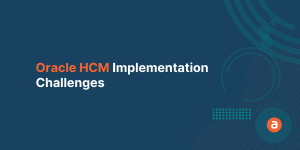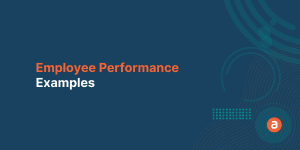An effective training program will reap huge benefits. Alternatively, improper training can be counterproductive to the organizational goals. There are several reasons why trainings often fail in companies, regardless of the size of the organization.
Avoiding common barriers to effective organizational learning & training can take you a long way in redefining the success of your training efforts and in making the most out of your investment.
But what is it that prevents employees from learning at work? Let’s take a closer look at some of the biggest barriers to organizational learning and how to overcome each barrier.
Why is Organizational Learning important?
Organizational learning and development is an important process of any organization. It simply serves as a useful tool for any employee to improve their abilities and expertise, which will undoubtedly benefit the company.
What are the Barriers to Learning in an Organization?
The following are the most common barriers to Organizational learning & training program:
- Program Focus vs Organizational Focus
- Limited Resources
- Resistance to Change
- Work-Learning Dichotomy
- Lack of Leadership
- Non-Learning Culture
- Short-Term Focus
1. Program Focus vs Organizational Focus
Typically, your employees’ attention is on the program or project delivery, not on organizational improvement. Employees put their energy and time into delivering assigned projects and programs.

Program focus is one of the most significant barriers to Organizational learning. Making your employees complete the task effectively and compelling them to do what is been assigned will make no improvements.
How to overcome Program focus barriers to the training program?
Explaining to your employees the following factors is one of the best ways to overcome Program focus barrier to Organizational learning:
- Why do they need to do this?
- What’s in it for them?
- Is there any alternative way of doing it?
- What skills they can acquire?
2. Limited Resources
When the economic downturn hits, many organizations chop their training and development budgets. Companies must see training as an “investment.”

Most individuals love the feeling of learning something new. Limited resource is one of the barriers for Organizational learning. The management must create resources for those who are fond of studying – especially in the workplace.
How to overcome limited resource barriers to Organisational learning?
Research from ClearCompany suggests that more than 68% of employees say Training & Development is the company’s most important policy. This shows the employees value learning to a great extent.
Create your organizational structures such as Policies, Standards, Regulations, Budget, and expenses such that they motivate your employees to learn and improve themselves rather than forbidding them to do so.
Try to implement creative & effective ways to build learning into the day-to-day activities of the organization.
3. Resistance to Change
Employee resistance to change is a significant barrier to Organizational learning. Individuals who are accustomed to a particular way of functioning over a long period, tend to avoid doing something new. They don’t want to learn or change to new processes.

It is common for some employees to feel like they might lose familiarity that they have with existing systems & processes.
For an organization to evolve, it is necessary to change. Change initiatives help you to adapt to the current market trends, internal processes, the latest technological advancements, and more.
How to overcome employee resistance to Training Programs & Organisational learning?
To prevent employee resistance, you must explain to your employees why the change is essential and also why now? You can highlight the benefits and try to implement some wow factors in there to gain their trust.
If you want to learn more strategies for dealing with employee change resistance, here’s just the guide for you, best practices and effective solution to overcome change resistance.
4. Work-Learning Dichotomy
In many organizations, work and learning are considered as two different aspects of employment, and work, invariably, always has the highest priority. A work learning culture means that the company’s values support learning in a meaningful & effective way.

Another big barrier to organizational learning in the workplace is your employee frustration in trying to improve their skills and knowledge without any support from the organization.
How to overcome this common barrier to Organisational learning?
Make sure you provide learning opportunities to your employees and motivate them to learn new things and grow themselves. Organizations can emphasize learning in their communication about organizational values & goals.
Boost your employees’ learning culture. Make sure your employees don’t complain saying that they don’t have time to complete their learning & training. Research more about organizational learning & development and invest in effective training tools if needed.
5. Lack of Leadership
For any organization to continue to learn & adapt, leadership must be engaged in their key processes of learning & performance improvement.

Many leaders avoid confrontation, tough questions & awkward discussions. Improper leadership leads to chaos and acts as a massive barrier to Organizational learning & training programs.
How to overcome a lack of leadership acting as a barrier to Organisational learning?
Organizational learning must be prioritized in a top-down manner and bucketed into different stages, with leaders involved at each stage. Leaders must be well equipped to boost employee confidence and morale.
6. Non-Learning Culture
Non-learning culture prevents your employees from wanting to learn something new. In an organization where learning is not encouraged or promoted, it is difficult for employees to make the most of their trainings.

Organizations can provide a learning environment but must be aware of various problems that will arise and end up as barriers to organizational learning.
How to overcome non-learning culture as a barrier to Organizational learning?
Identify the pain points of your employees and address them as early as possible. Provide value and opportunities for learning in the workplace. Showcase the benefits of learning and you can recognize the fast learners to motivate others.
7. Short-Term Focus

Temporary solutions and short-term vision are barriers to Organizational learning. Leaders usually tend to gravitate towards the most obvious problem without considering all the future consequences.
How to overcome short-term focus barriers to Organizational learning?
Organizational learning is an on-going process and so it adds up when you focus on the big picture rather than short-term goals. Encourage your leaders to allocate time for deciding long-term vision and provide employee learning opportunities all the time.
Organizational learning might involve complex content. Complexity can overwhelm your employees and act as a barrier to training in the workplace. The long-term focus must consider all these complexities and provide an easy & effective way of learning to your employees.
What causes barriers to organizational learning?
The following are some reasons that can cause barrier to organizational learning and development,
A. Ineffective Tools
Having the wrong tools or technologies can create unnecessary back-and-forth and communication hiccups. Employees need tools that help them learn and grow, not hinder them.
B. Lack of Communication
When employees are encouraged to ask questions, then waiting around for hours to get a response from managers, it can be very disheartening. Employees need consistent support in order to understand their goals and how to reach them.
C. Missing Motivation
There really needs to be a strong team dynamic to keep everybody motivated and moving forward. When that’s missing, there is an essential backbone that isn’t there to really drive great progress. It’s up to managers and leaders to decide the best ways to motivate employees, and they need to do that consistently.
Strategies to overcome learning and development barriers
The following are some of the ways to overcome Learning and development barriers,
- Because an organization’s learning and development needs are unique, they need to ensure that the learning and development plan is connected with an overall company strategy. For instance, if the company has prioritized brand marketing strategy, they need to include marketing courses in their L&D strategy.
- The company’s learning and development strategy should be its top priority. Senior executives should be empowered to lead their professional development and provide enough funding, resources, and assistance.
- A key stakeholder analysis should be conducted to identify key players and identify what they expect from its learning and development strategy. They should be a part of the staff training and development process to gain buy-in.
- People will be more productive when they are accountable. Make sure each team member knows exactly what their tasks are and when their deadline is and make it transparent to their peers. If everyone knows exactly who’s working on what, they can hold each other accountable, which in turn will improve overall productivity.
Pro tip:
A Digital Adoption Platform (DAP) is the best investment to easily train your employees on any complex web-based applications. Digital Adoption platforms like Apty act as a guidance layer that clearly shows your employees what they should be doing and how it should be done.
Considering the current pandemic situation, a DAP is the best way to train remote employee and keep organizational learning going. To gear up and adapt to the current situation and to ensure business continuity, the Digital Adoption Platform is one of the most high-impact investments to consider.













